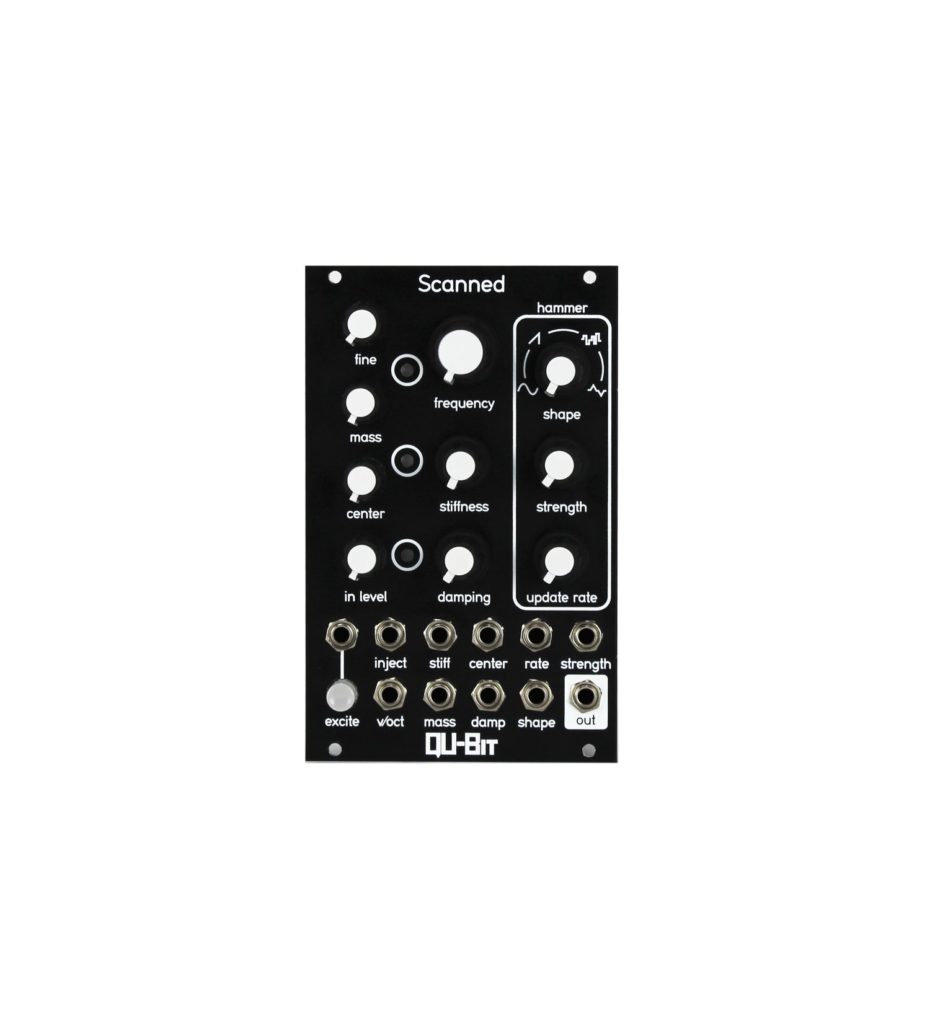The Qu-Bit Scanned VCO is an interesting Eurorack Module that stands out from the crowd when you hear it. Thats a strong statement so the question is why??? Why does it sound so unique and strange? well the answer lay with the name “Scanned” as in Scanned synthesis. The scanned synthesis technique is relatively new in terms of synthesis having only been utilized since 1999. Invented by pioneers of computer music Verplank, Mathews and Shaw. The Csound platform was previously the only way to utilize this synthesis technique. A some what complex and certainly not what I would consider accessible route for the average synthesist.
Scanned Synthesis is based around Mass connected by springs and dampers.
The basic idea is that Scanned synthesis is a way of creating sounds based on the physics of a string of Mass elements connected by springs with dampers. excitation (think like a pluck) of the mass creates movement which is converted into sound waves. This is a bit over simplifying the technique. There are some very unique qualities of Scanned synthesis. The fact that the Mass can stay constant while pitch can be separately altered is unique. this separates Scanned synthesis from something like Karplus Strong or traditional wavetable synthesis. This is done via the update rate. Update rate is how fast the module is reading mass displacement and translating that into sound. This allows us to get this separation of time, Pitch and Timbre. The effect of this can be a musically stable yet evolving sound.
Scanned VCO pairs nicely with reverbs (I love sending it through my Spring reverb) and delays. It can go from sharp plucks to slowly evolving ambient textures with ease. It has a strangely digital quality when the frequency is low. The sound is oddly acoustic sound when excited with a mid range frequency with heavy mass. This is one of those modules you will get lost in, and thats a great thing when coming up with happy inspiring accidents.
Qu-Bit detals their module here https://www.qubitelectronix.com/modules/scannedvco
For more info on scanned synthesis I highly recommend reading this white paper https://paris.cs.illinois.edu/pubs/smaragdis-icmc00.pdf (thanks to Richard Boulanger, Paris Smaragdis, John fitch)


